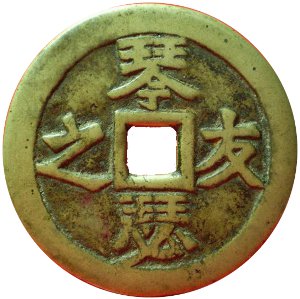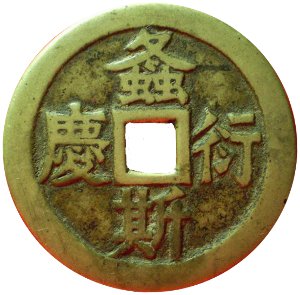Zithers and grasshoppers may seem like an unlikely combination but they are the theme of an old Chinese charm.
The zithers in this case refer to the ancient Chinese musical instruments of the qin (琴) and the se (瑟).
The qin or guqin (古琴) is a seven-stringed zither which was the instrument played by the sages and has a history or more than 3000 years.
The se (瑟) is a similar musical instrument which had 25 strings although even more ancient models had 50 strings.

At the left is an example of an old Chinese charm with the zither and grasshopper theme.
The inscription is qin se you zhi (琴瑟友之) which means “with the qin and the se be friendly to her” or “the qin and se zithers warm her heart”.
The inscription comes from a poem entitled “Cry of the Ospreys” (guan ju 关雎) which is found in the ancient book of poetry known as the “Book of Songs” (shi jing 诗经) which was compiled by Confucius 2500 years ago.
The poem celebrates giving birth to many children.
The qin and the se gradually came to symbolize marital harmony which helps to explain the inscription on the other side of the charm.

The reverse side of the charm has the inscription zhong si yan qing ( 螽斯衍庆) which translates as “may your children be as numerous as grasshoppers”.
The Chinese katydid or long-horned grasshopper has its own “musical instrument” and makes “music” by rubbing its wings together.
In olden times, Chinese children loved to catch grasshoppers and raise them in small cages during the summer and autumn.
Furthermore, grasshoppers like to gather together, similar to an extended family, and they reproduce in large numbers.
The grasshopper was, therefore, seen as a symbol of fertility and procreation to traditional Chinese families that wished for many sons and grandsons to continue the ancestral lineage and to carry out ancestor worship.
While zithers and grasshoppers may seem to be an unusual pairing, the ancient Chinese saw them as fitting symbols of marital harmony and procreation.